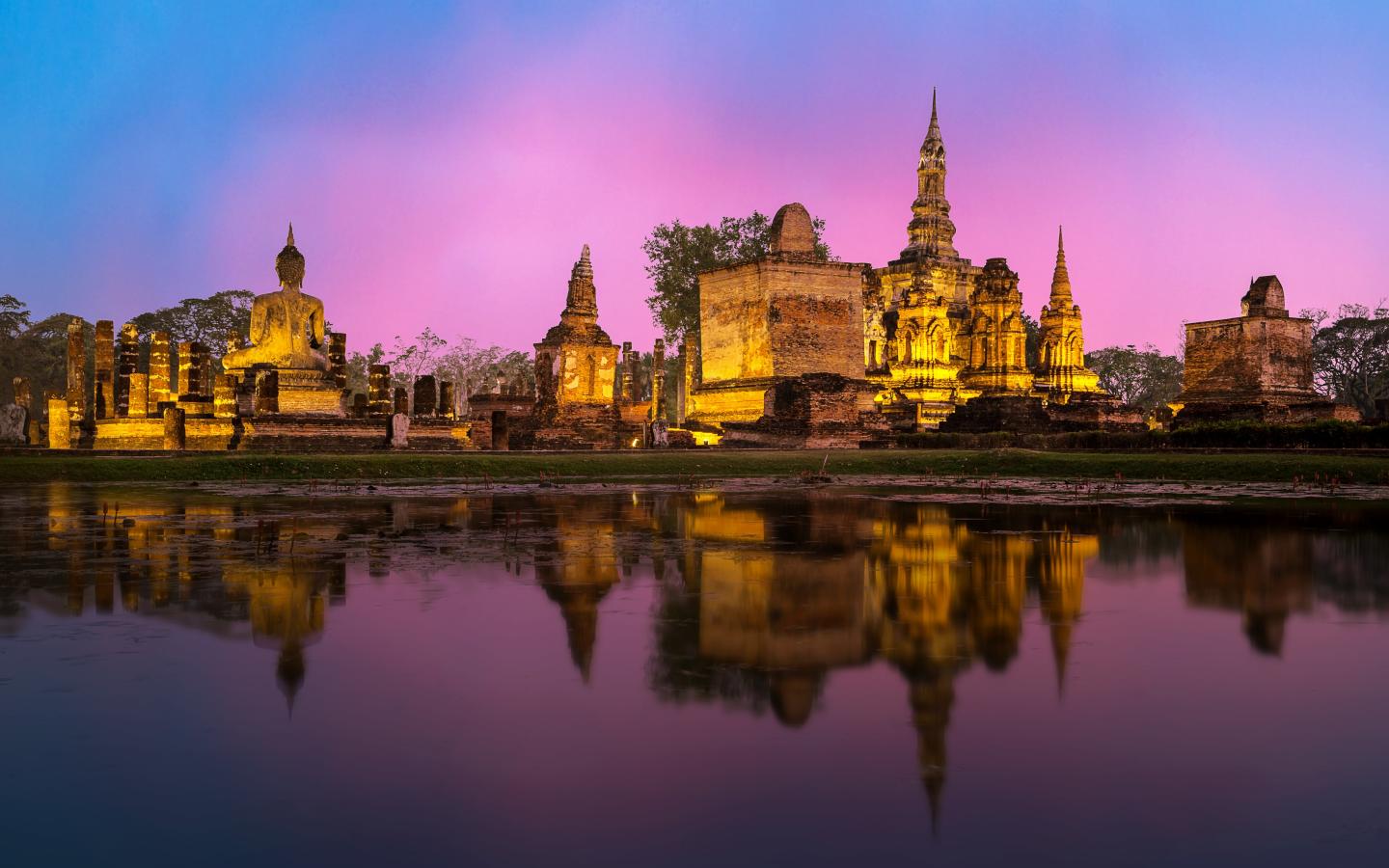Thailand is quickly becoming a hotspot for stargazing tourism, thanks to its relatively unpolluted sky away from city centres and number of remote national parks. Find out everything you need to know about chasing the stars in this southeast Asian country!
Thailand’s starry night sky
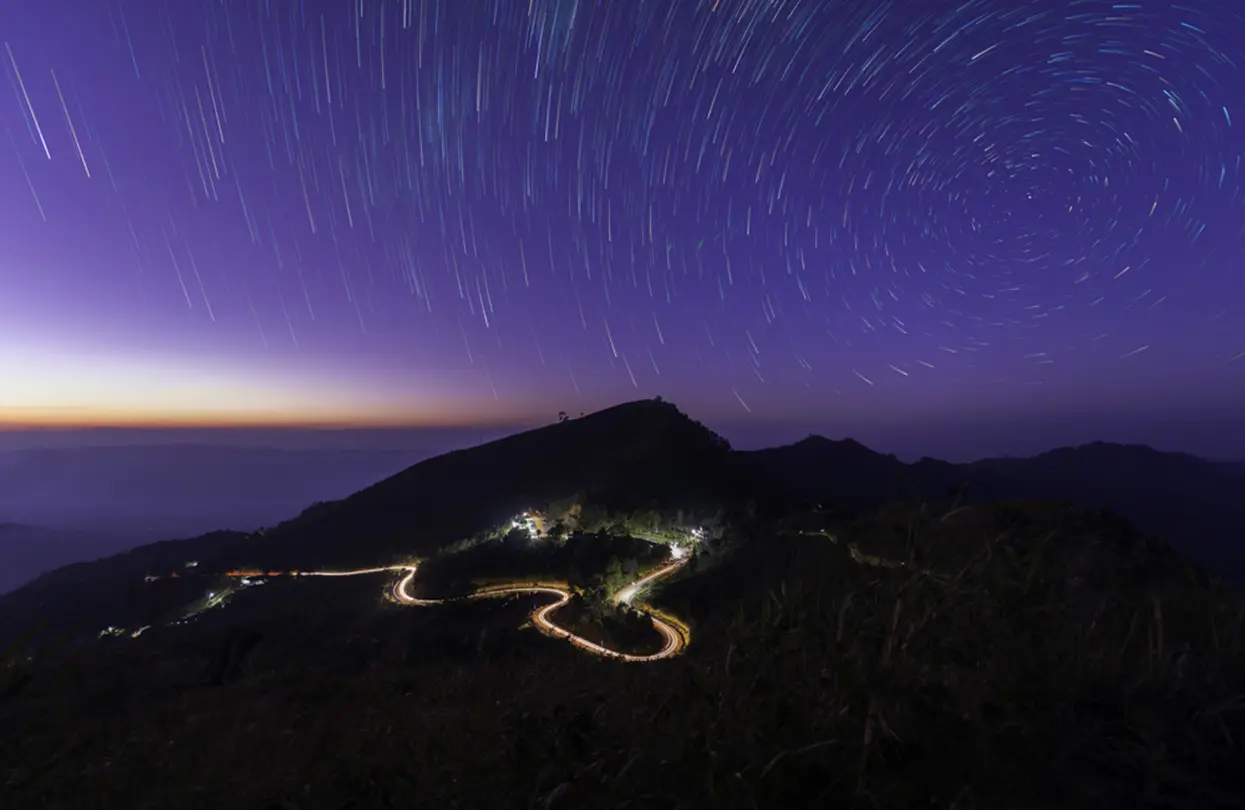
As any astronomer will tell you, one of the essential factors in stargazing is having a clear view of the night sky. Unfortunately, light pollution is becoming an increasingly big problem in many parts of the world, making it difficult to see anything but the brightest stars. This is not a problem you’ll have to worry about in Thailand. Thanks to its national parks and rural landscape, the skies above quite a few parts of Thailand are some of the clearest.
The Beauty of the Thai Night Sky
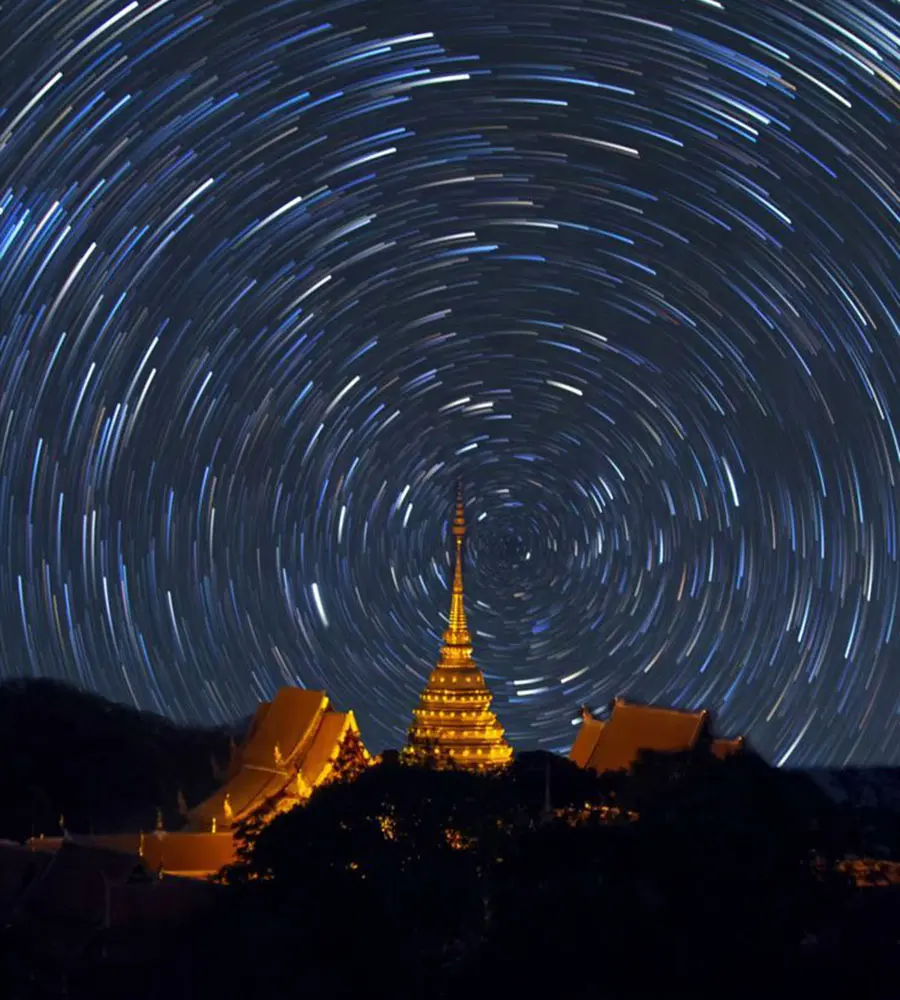
The night sky is a powerful force, reminding us of our place in the universe and offering endless inspiration for generations. But, perhaps the biggest reason to come stargazing in Thailand is simply for the beauty of the night sky itself. Thanks to Thailand’s location near the equator, you’ll easily see both northern and southern constellations. And if you’re lucky enough to catch a glimpse of the Milky Way, you’ll be treated to one of the most stunning sights nature has to offer.
Tips for Stargazing in Thailand
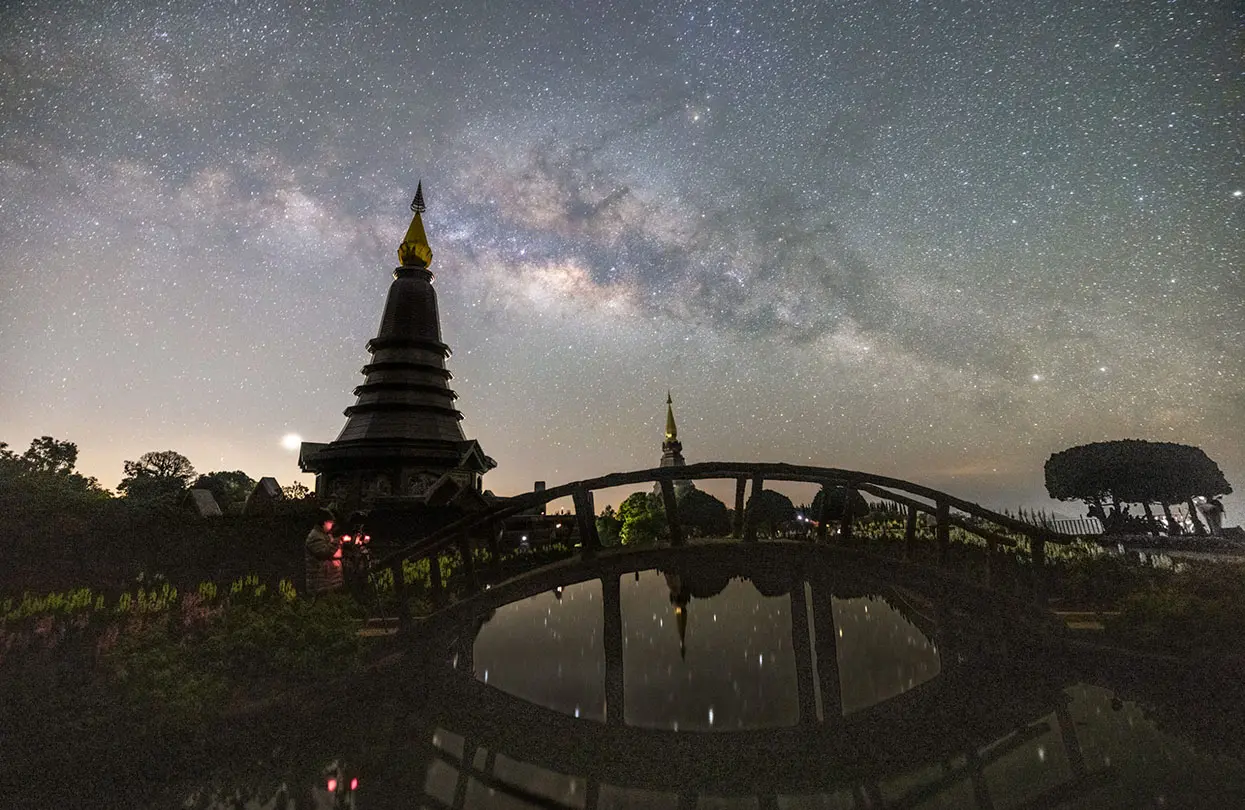
If you’re planning on doing some stargazing during your time in Thailand, there are a few things you should keep in mind. First and foremost, make sure to check what time of year it is before you go—the best time for stargazing in Thailand is during the dry season (November-April). You’ll also want to make sure you bring along insect repellent. Finally, we recommend heading out into the countryside, away from city lights, for optimal viewing conditions.
The travel routes for stargazing in Thailand
In Thailand, five national parks have taken steps to preserve this natural wonder by earning the Dark Sky Conservation Area designation. From Huai Nam Dang in Chiang Mai to Phu Langka in Chaiyaphum, these protected spaces offer unparalleled opportunities to take in the cosmos. These areas strive to limit light pollution and offer visitors a chance to experience the beauty of a truly dark sky filled with twinkling stars and galactic wonders. Travelling to these ‘dark spots’ is about harnessing the power and imagination that comes from staring up at an infinite expanse of stars above.
Dark Sky Conservation Areas in National Parks:
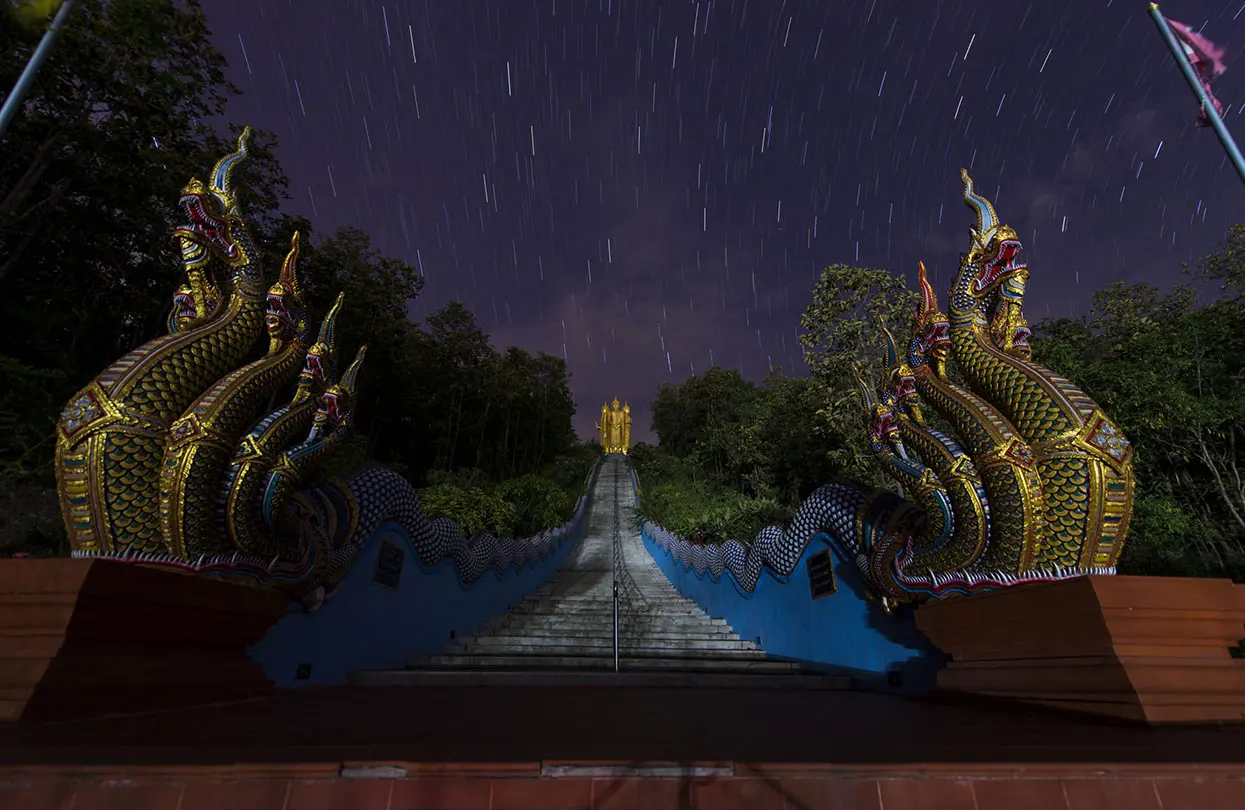
- Huai Nam Dang National Park, Chiang Mai
- Pha Taem National Park, Ubon Ratchaburi
- Phu Khieo-Thung Kraman Wildlife Sanctuary, Chaiyaphum
- Pa Hin Ngam National Park, Chaiyaphum
- Phu Langka National Park, Chaiyaphum
Dark Sky Community & Properties:
- On Tai Community in San Kamphaeng District, Chiang Mai
- Alcidini Wine Vineyard in Pak Chong District, Nakhon Ratchasima
- Raintree Residence Hotel in Khao Yai, Nakhon Ratchasima
- Muak Lek ATV Stadium in Muak Lek District, Saraburi
- Ban Rai Yai Cha Phlu in Muak Lek District, Saraburi
- The Piano Resort in Pak Chong District, Nakhon Ratchasima
- Gran-Monte Wine Vineyard in Pak Chong District, Nakhon Ratchasima
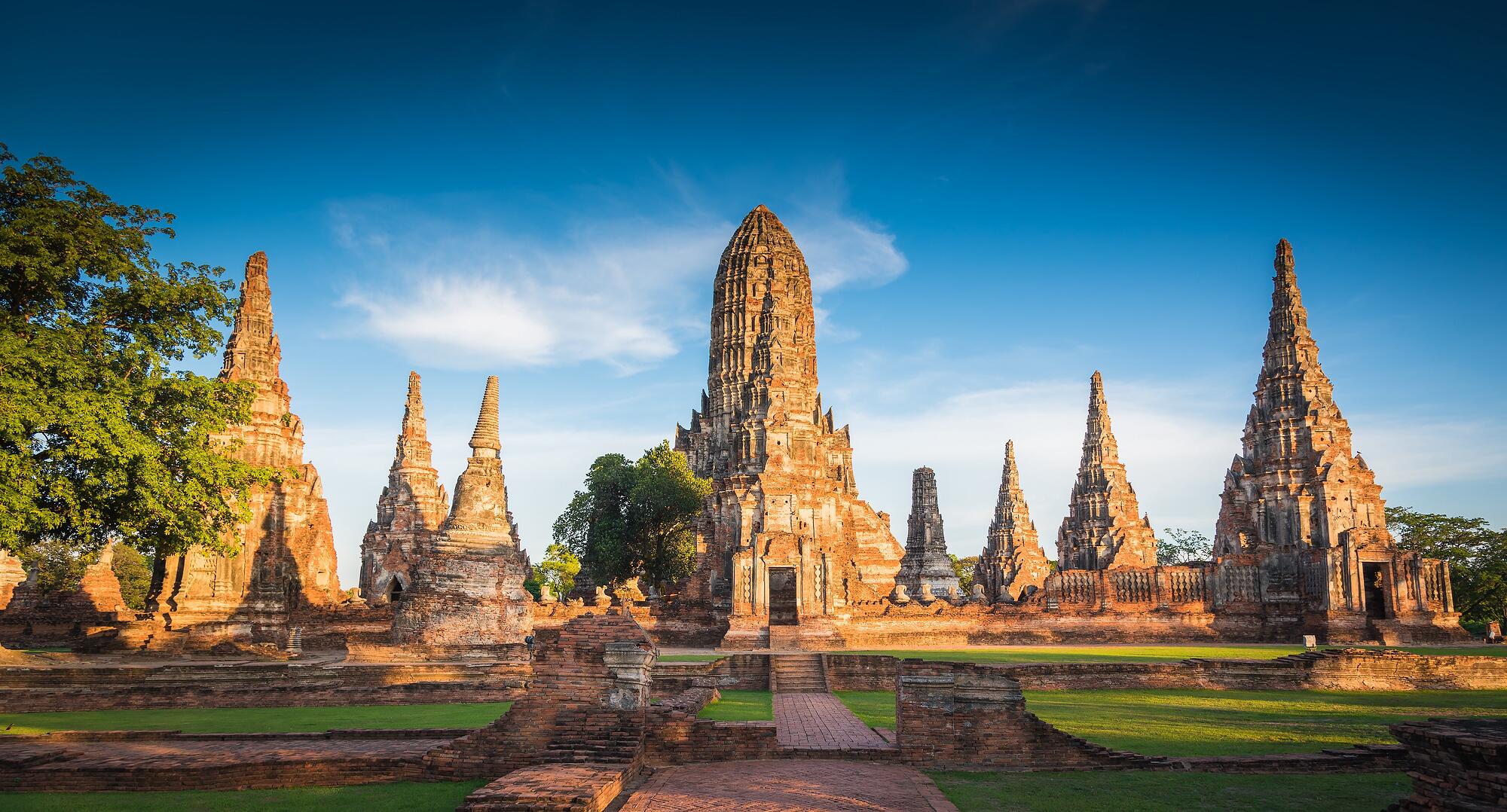
Ayutthaya is Thailand‘s archaeological gem, brimming with Buddhist temples, monasteries, and ancient statues of monumental proportions. Dating back to 1350, the city had a rich and turbulent history with a fair share of glory and strife. Ayutthaya Historical Park is a must-see for history buffs and admirers of archaeology. The park incorporates the zone designated as a UNESCO World Heritage Site and comprises 67 stunning temples and ruins. We recommend returning to Bangkok by boat for views of the traditional river life.
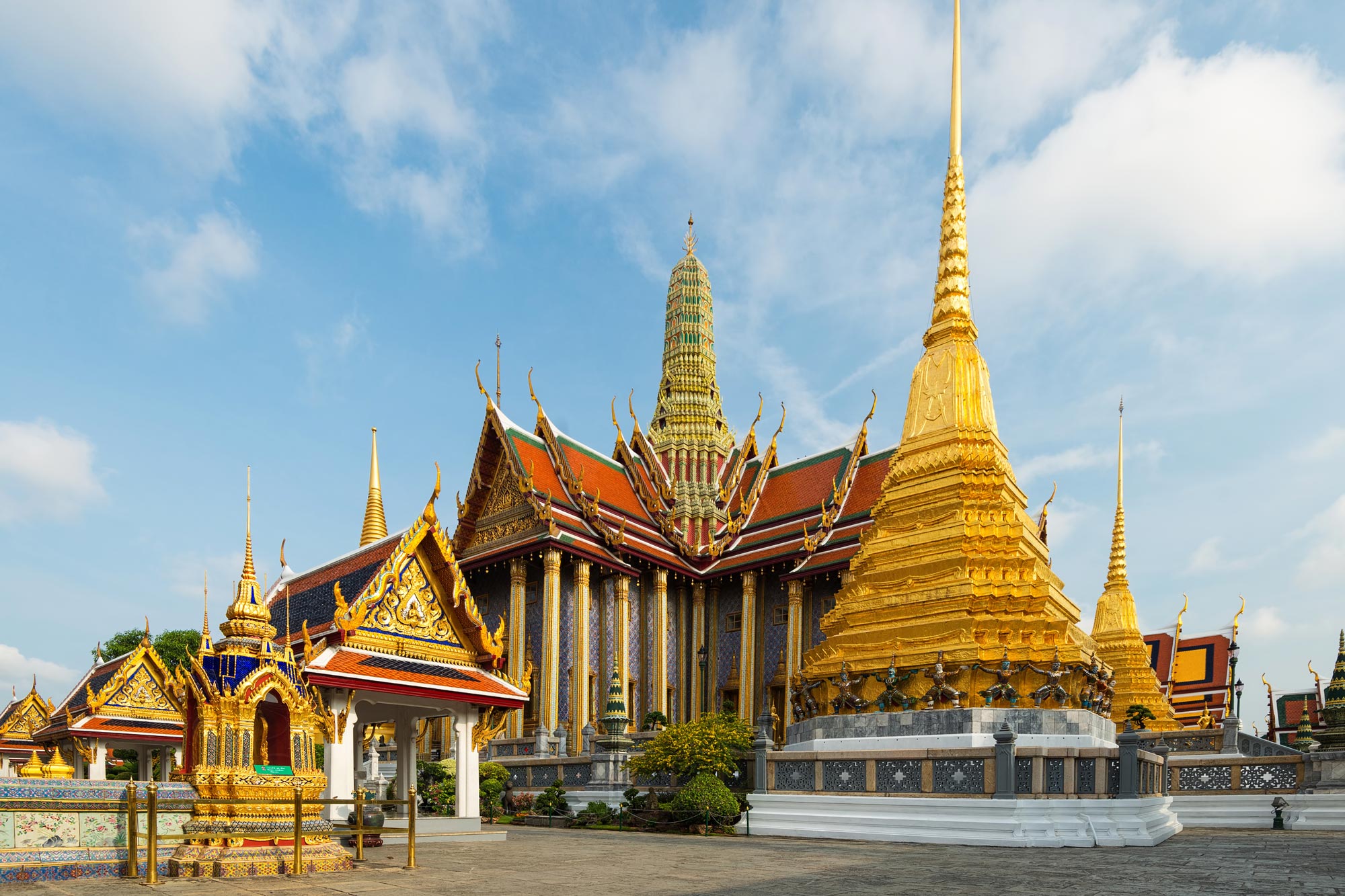
The majestic Grand Palace is considered the most famous landmark in Bangkok. Built in 1782, it was the official residence of the Thai King, the Royal court, and the administrative seat of government for 150 years. The palace houses several impressive buildings including Wat Phra Kaew (Temple of the Emerald Buddha), which contains the greatly revered Emerald Buddha that dates back to the 14th century. Because the Grand Palace is considered a sacred site in Thailand, visitors must follow a strict dress code.
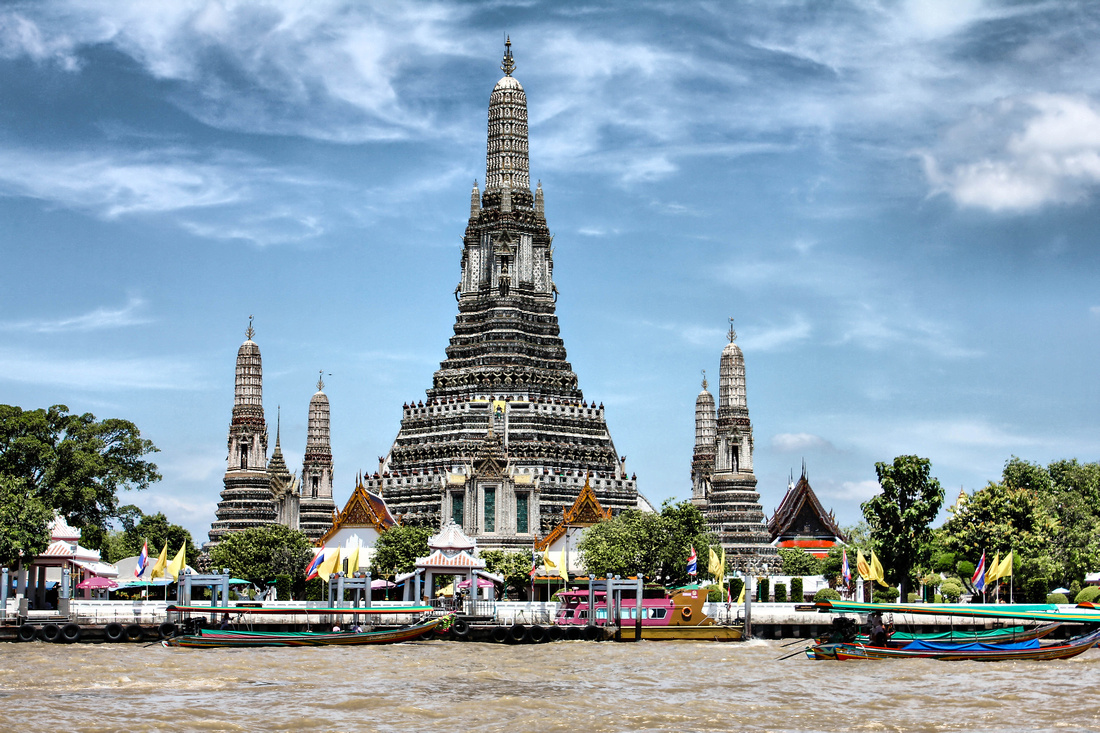
Wat Arun, known as the Temple of Dawn, is one of the leading attractions of Bangkok. Locally known as Wat Chaeng, this landmark temple is located on the west bank of the Chao Phraya River. We recommend spending at least an hour to enjoy the scenic views of this temple. Although it is known as the Temple of Dawn, it looks stunning at sunset, particularly when illuminated at night. Given the beauty of the architecture and the fine craftsmanship, it’s not surprising that Wat Arun is considered as one of the most beautiful temples in Thailand.

Also known as the White Temple, this visually striking Buddhist temple is located in Chaing Rai. Built on the site of an old dilapidated temple, eclectic Thai artist Chalermchai Kositpipat footed the bill to design and construct a contemporary and unusual space that doubles as an art exhibition. The juxtaposition of both traditional Buddhist themes and modern influences, including murals of Mickey Mouse, Superman, Kung Fu Panda, and Michael Jackson, all add to the intrigue of this famous tourist attraction. Don’t miss the Bridge of the Cycle of Rebirth which leads to the Gates of Heaven.
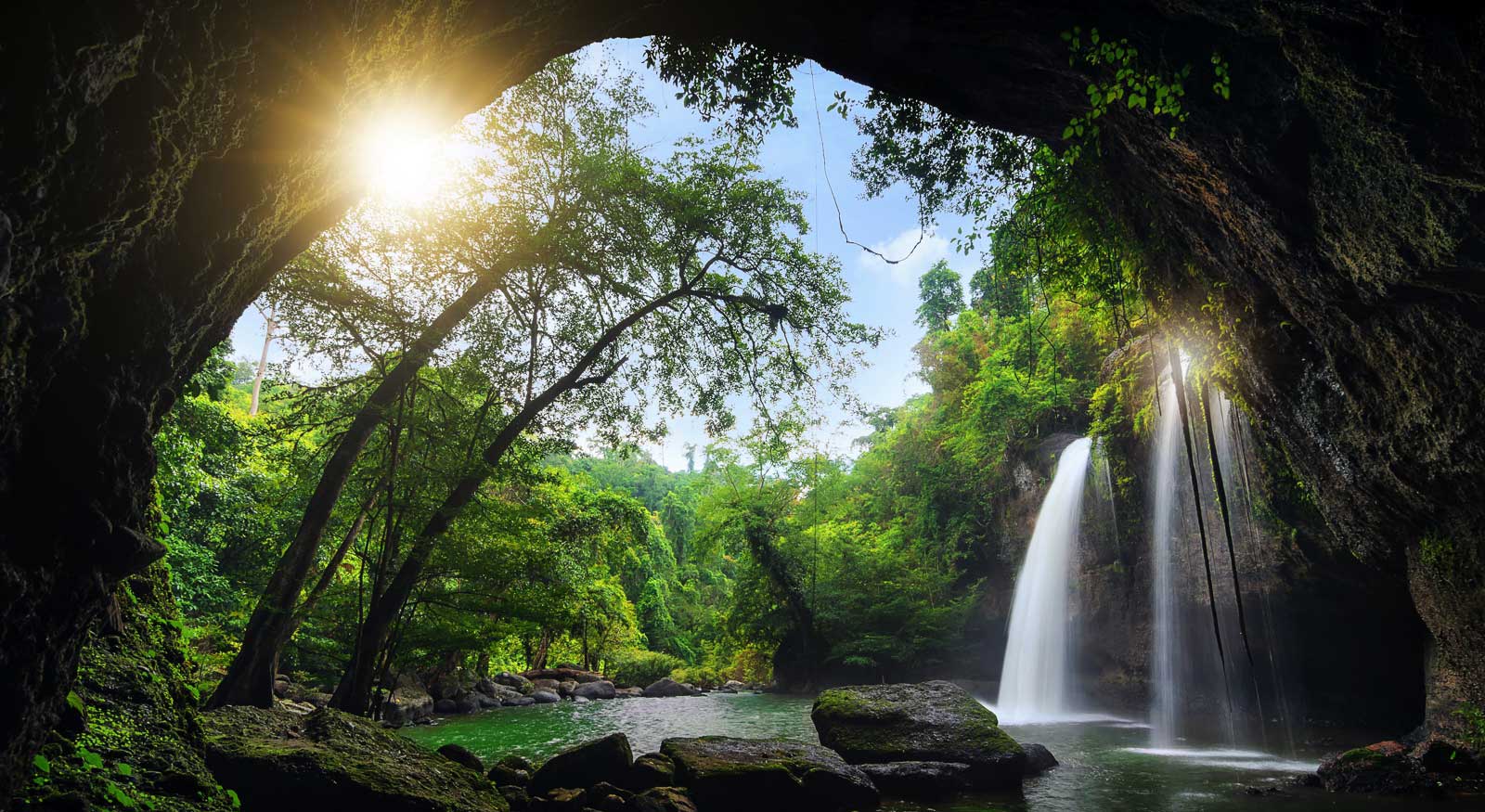
Khao Yai National Park, a UNESCO World Heritage Site, is known for its scenic views and wildlife experiences. More than 50 km of hiking and biking trails wind through the long-standing nature preserve, dotted with waterfalls and viewpoints. Nestled in central Thailand, Khao Yai National Park is spread across the four provinces of Saraburi, Nakhon Nayak, Nakhon Ratchasima, and Prachinburi. Guests can also camp out at the park and watch the sunrise.
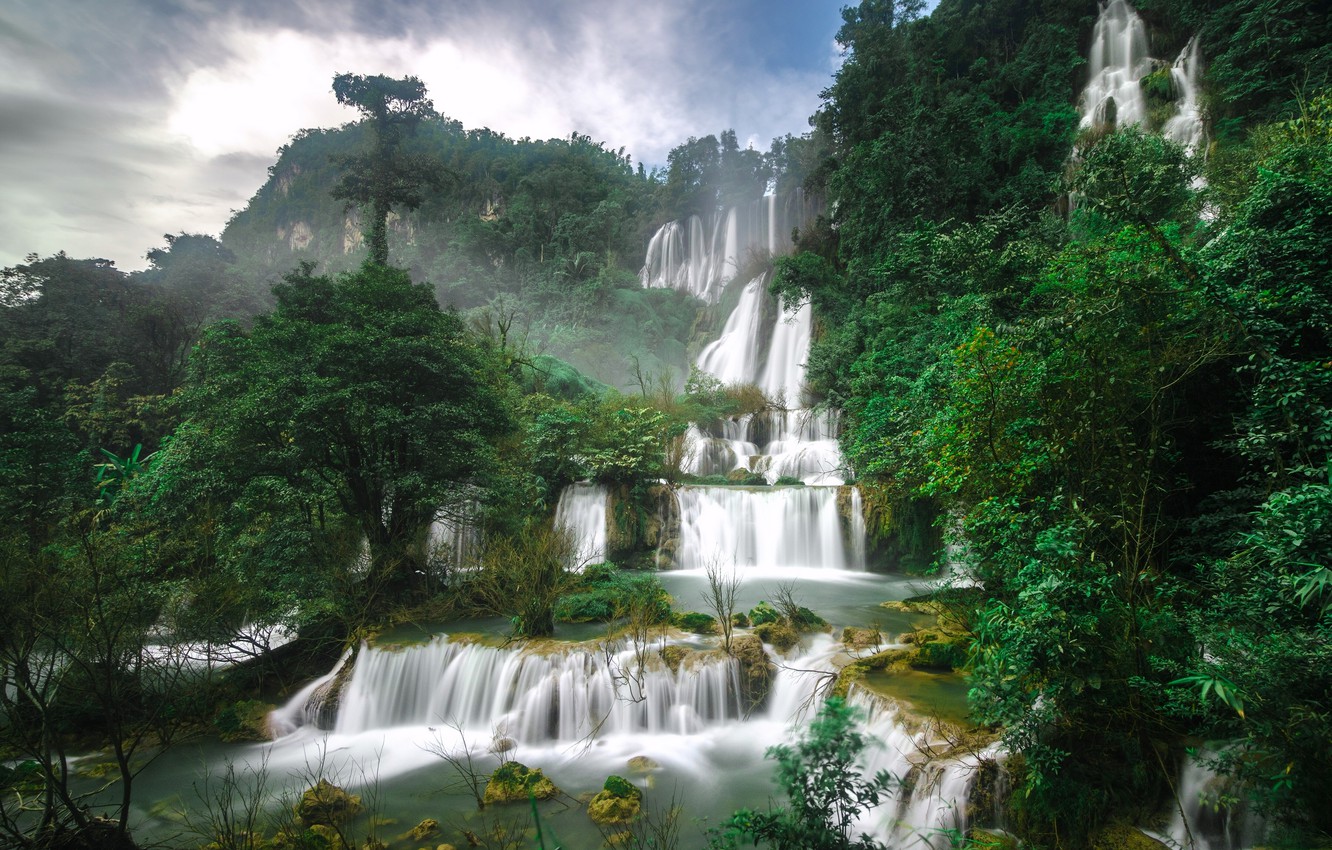
Measuring 250 meters tall by 450 meters wide, Thi Lo Su Waterfall is the highest and largest waterfall in Thailand. Located on the Mae Klong River in Tak Province, a 2-km trek leads adventurers through the dense rainforest where clouded leopards and tapirs roam below 1250+ varieties of palm trees. This hidden gem is not just a record holder in Thailand; it is also the 6th biggest waterfall in the world by volume.
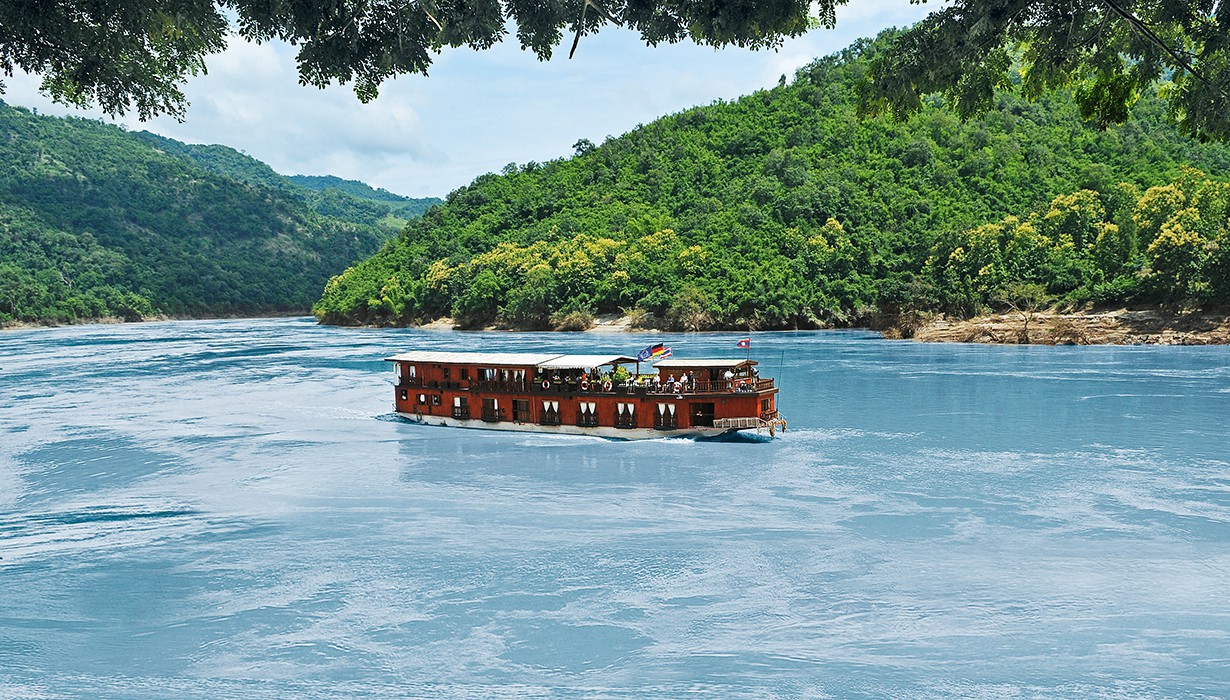
The Mekong River is the world’s 12th longest river and divides the border between Thailand and the eastern plains of Laos. The Mekong Basin is one of the richest areas of biodiversity in the world with new species regularly being declared. The Mekong has a complex history and the difficulty of navigating the river has meant that it has divided, rather than united, the people who live near it. Whether cruising for pleasure or an historical narrative, the river communities and natural landscapes on the shores are not to be missed.
Thermae Spa
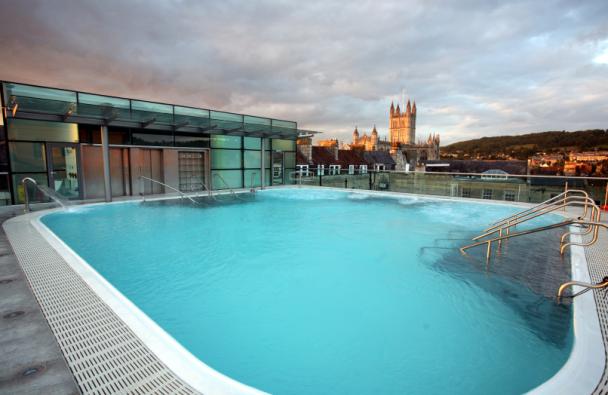
Festival Finale
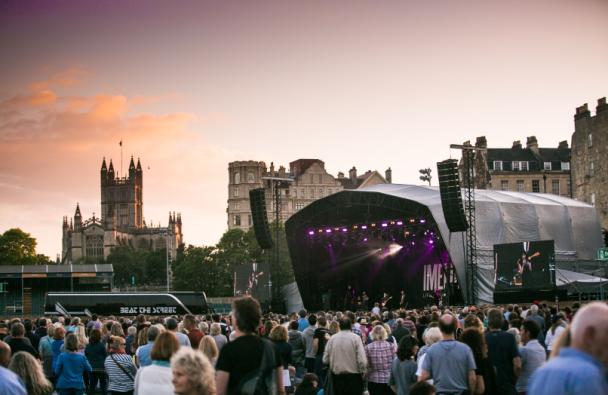
Pulteney Bridge, Lloyd Evans Photography
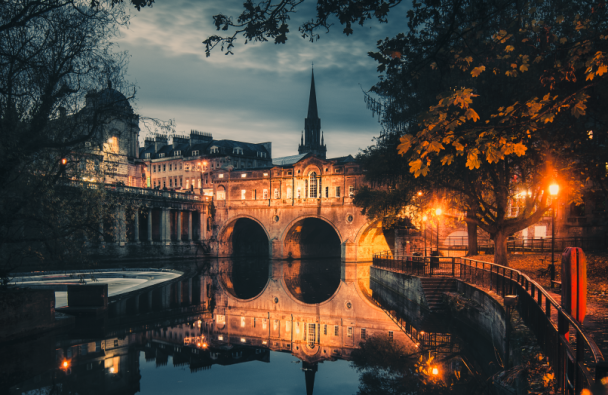
Related Articles

On the heels of a successful Black Friday, Holland America Line is sailing into the annual "wave" cruise-booking season with a "Time of Your Life" offer that makes cruising an even more valuable vacation.
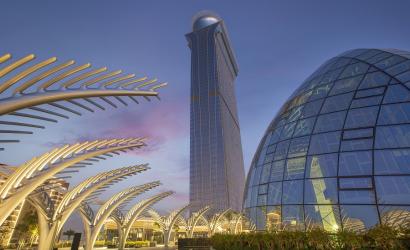
Get into the holiday mood and start your countdown to Christmas with celebrations at Nakheel Mall, which will transform into a winter fun zone with activities such as an edible snow station, bubble spin and fishing games.
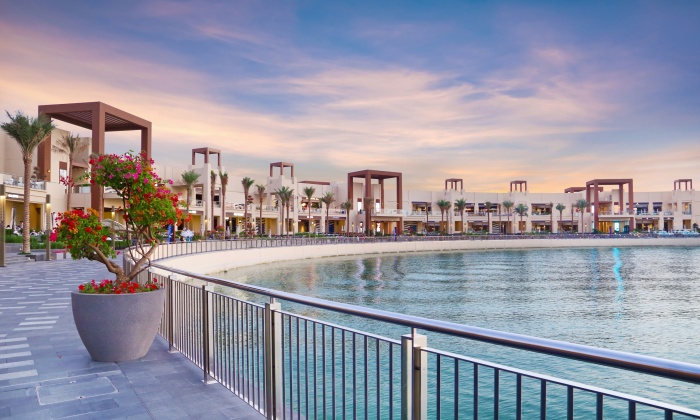
Peaches & Cream has officially opened its doors to the public, located in Palm Jumeirah, the new beach club is founded by hospitality group Limestone Lab. The venue is an 80s Miami beach restaurant and lounge.
